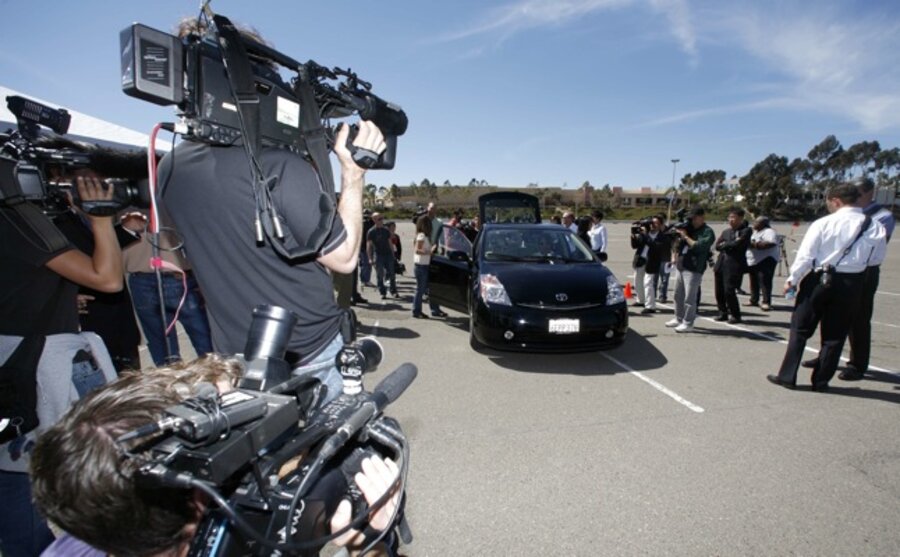For Toyota, a sudden acceleration of claims
With heavy media attention surrounding sudden acceleration of Toyota cars, the number of consumers reporting problems with their Toyotas has escalated as well.
In February, 1,733 consumers reported problems with Toyotas to the National Highway Traffic Safety Administration (NHTSA), according to the Wall Street Journal. That’s triple the number in July 2008, which was before a highly publicized crash of Lexus in August 2009, when a highway patrol officer and three members of his family were killed, allegedly caused by a stuck accelerator.
On the one hand, it’s expected that more people report a problem once it’s been made public. They may finally have validation for something they’ve previously experienced.
On the other hand, it's possible that the publicity has spurred spurious reports of problems, says an expert who has examined previous sudden-acceleration claims.
"There’s a tremendous amount about this in the media,” says Richard Schmidt, a professor emeritus of psychology at University of California in Los Angeles who studied a similar acceleration problem in the 1980s for several large automotive companies. “It makes you wonder to what extent the phenomenon has really generated itself, as opposed to being generated by some sort of glitch in the machine.”
That’s exactly the message Toyota tried to get across Monday, as it announced preliminary results of its engineers’ examination of the latest incident to capture media attention.
On March 8, James Sikes says his 2008 Prius suddenly surged forward as he was passing another car on a San Diego freeway, reaching speeds over 90 miles an hour and not responding to his attempts to brake. After 34 miles, he finally brought the car under control with the help of a highway patrolman.
But Toyota disputed his version of events in a press conference Monday.
Toyota said its engineers found no evidence of a stuck pedal in Mr. Sikes’s Prius or any reason why the car wouldn't have stopped when the brakes were applied. Instead, the data indicated the accelerator and brake has been alternatively pumped 250 times, said Mike Michels, vice president of communications for Toyota Motor Sales USA.
While declining to call the incident a hoax, Mr. Michels pointed a finger at the media, saying coverage of recent incidents had been “dramatic" and that the number of consumers reporting problems has “really shot up” due the publicity around the recalls.
“There’s been an avalanche of bad news regarding Toyota in the news lately,” said Gary Kaminsky, co-owner of the Toyota dealership that serviced Sikes' Prius, who also spoke at the press conference. “Some of it may be valid, some may not.”
Still, the heightened media coverage can’t explain all the problems with Toyotas, says Clarence Ditlow, executive director of the Center for Auto Safety, a consumer-safety group cofounded by Ralph Nader and based in Washington, D.C.
For two years starting in January 2006, the number of consumer complaints involving Toyotas held steady at around 200 a month, with a low of 167 in April 2006 and a high in of 379 in December 2008, according to the Wall Street Journal.
While that number is well below recent incident reports, it’s still significant, Mr. Ditlow says.
Eventually, “a recall should decrease the number of complaints, because it should be eliminate the problem,” he adds. “The problem for Toyota is if the recall doesn’t fix the problem.”





